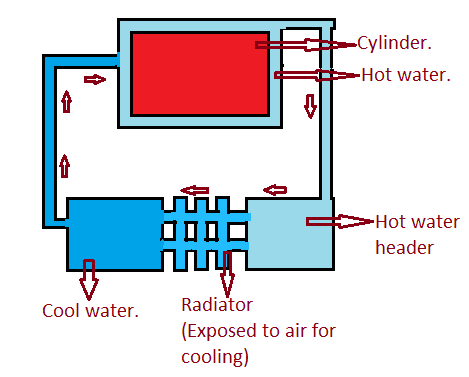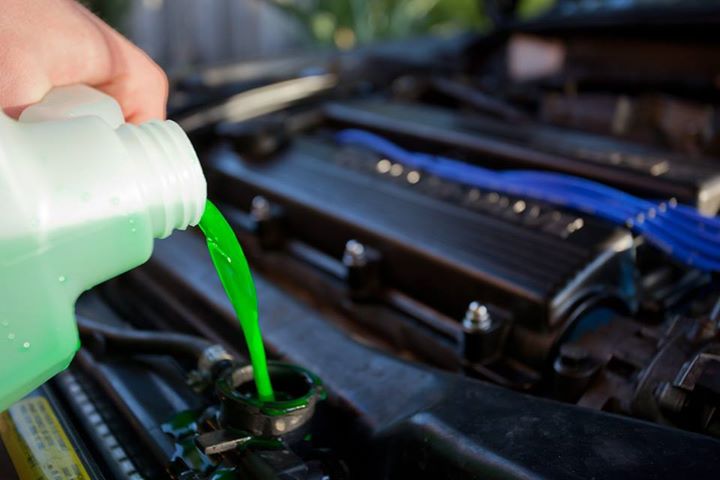Introduction: Fuel pump gaskets are essential components of any vehicle’s fuel system. These gaskets help maintain an airtight seal between two parts, such as between the pump and its housing or between different components within a carburetor or injector setup. In order to ensure that your vehicle’s fuel system operates properly, it is important to make sure that these gaskets remain in good shape and are replaced if they become worn out or cracked.
What are Fuel Pump Gaskets?
Fuel pump gaskets are circular pieces of rubber or silicone material which provide an airtight seal between two parts within a vehicle’s fuel system. They can be used for a variety of purposes, such as preventing fuel from leaking out of the system, reducing noise levels, and keeping the right amount of pressure inside the system. Without the right kind of gasket in place, your vehicle could suffer from decreased performance due to improper fuel flow or other issues related to air leaks in the system.
How Do I Know When To Replace My Fuel Pump Gasket?
Fuel pump gaskets can become worn out over time due to exposure to extreme temperatures and other environmental factors. If your vehicle is experiencing any performance issues, such as misfiring or poor acceleration, then you may want to check the condition of your fuel pump gasket for signs of wear and tear. Additionally, if you notice that there is an unusual amount of noise coming from your engine compartment when you start up your car or truck, this could also be a sign that your fuel pump gasket needs to be replaced.
Where Can I Find Replacement Fuel Pump Gaskets?
When it comes time to replace your fuel pump gasket, there are several options available depending on where you live and what type of car or truck you have. Many automotive supply stores carry generic replacement gaskets which can fit most vehicles without issue. Alternatively, online retailers may be able to provide more specialized versions designed specifically for certain makes and models. Finally, if you have access to a local mechanic shop they may also be able to source a replacement part for you at a reasonable price. Conclusion: The importance of having a properly functioning fuel pump gasket cannot be understated; without one in place there is nothing preventing fuel from leaking out into the environment or allowing too much pressure into the engine compartment which could cause damage down the line. If you suspect that yours may need replacing then it is best to take action sooner rather than later in order ensure maximum efficiency and safety while driving your car or truck. Fortunately there are plenty of replacement options available both online and off so finding the right part should not be too difficult!
Does a fuel pump have a gasket?
Fuel pumps, in general, do not have gaskets. Instead, they have seals, O-ring or similar type of sealant, these seals are designed to prevent fuel leakage and maintain the integrity of the fuel system. They are located between the fuel pump and the fuel tank, between the fuel pump and the fuel pressure regulator, or between other components in the fuel system.
The seals are located on the pump’s body or in its housing, made of synthetic or rubber material. They will also be located at the mounting points to keep out any debris, dirt or liquids from the electrical connections and the housing.
It’s important to note that fuel pumps can also be equipped with additional features such as a pressure relief valve, this valve will have a gasket or seal to keep the pressure of the fuel in the pump.
It’s also worth noting that fuel pumps, like any other mechanical component, can fail and develop leaks. The leaks can be caused by a number of issues such as worn seals, internal damage, or a foreign object blocking the fuel passage. If you notice any fuel leak, a strange smell, or a decrease of engine performance, it’s best to have a trained mechanic check your vehicle and diagnose the problem.
What can I use for a fuel pump gasket?
Fuel pumps typically do not have gaskets, instead, they have seals or O-rings made of synthetic or rubber material. These seals are designed to prevent fuel leakage and maintain the integrity of the fuel system.
If a fuel pump does require a gasket, it is recommended to use a gasket that is specifically designed for the fuel pump and that meets the vehicle’s specifications. Gasket makers like Permatex, Loctite, and RTV Silicone can be used but they are typically used as a temporary fix or sealant to fix leaks and not as a replacement gasket.
When replacing a fuel pump, the manufacturer will provide a replacement seal or o-ring that is designed to fit the pump properly. It’s highly recommended to use the gasket or seal that is specified by the manufacturer, as using an incorrect one could result in leaks or other problems that could cause damage to the fuel system.
If you are unsure of the correct gasket to use, it’s best to consult the vehicle’s service manual or consult with a professional mechanic or the dealership to ensure that the correct gasket is used and that the installation is done properly.
What can I use for gasket material?
There are many materials that can be used for gaskets, including:
- Rubber: This is a popular material for gaskets because it is flexible and can be used in a wide range of temperatures and pressures. Rubber gaskets can be made from natural or synthetic rubber, and there are many different types available, including neoprene, nitrile, and silicone.
- Cork: Cork is a natural material that is used for gaskets because it is compressible and can be used in low-pressure applications. Cork is also resistant to water and oil.
- Fibrous materials: Gaskets made from fibrous materials, such as asbestos and non-asbestos, can be used in high-temperature and high-pressure applications. They are also resistant to many chemicals.
- PTFE (polytetrafluoroethylene): PTFE is a synthetic fluoropolymer of tetrafluoroethylene. It is a thermoplastic polymer. PTFE is extremely chemically resistant and can be used in high-temperature and high-pressure applications, but it can be relatively expensive.
- Graphite: Graphite is a form of carbon that is used for gaskets because it is compressible and can be used in high-temperature and high-pressure applications. Graphite gaskets can also be used in applications where chemicals are present.
- Metal: Metal gaskets are often used when tight seals are needed and in high-pressure and high-temperature applications. Some types include Copper, SS 304, SS316, etc.
The choice of gasket material will depend on the specific application and the conditions in which the gasket will be used.
What are the 3 types of gasket?
There are many different types of gaskets, but some of the most common are:
- Compression gaskets: These gaskets are designed to be compressed between two flanges to form a seal. They are typically made from materials that are compressible and can withstand the pressure and temperature of the application. Examples of materials used are rubber, cork, graphite and PTFE
- Sheet gaskets: These gaskets are pre-cut to specific sizes and shapes and are designed to be inserted between two flanges. They are made from a variety of materials, including rubber, cork, and fibrous materials such as non-asbestos and asbestos.
- Spiral-wound gaskets: These gaskets are made from a combination of metal and filler materials, such as graphite or PTFE. They are designed to be wound around the flange and compressed between the flanges to form a seal. They have a good ability to sustain high pressure and temperature. They are suitable for high-pressure and high-temperature applications.
Other types of gaskets include:
- Ring Gasket
- Heat exchanger gasket
- Kammprofile gasket
- Lens gasket
- O-ring
- and many more
It’s worth noting that depending on the application and industry, the types of gaskets can be different and can have different name also.
What thickness gasket should I use?
The thickness of a gasket depends on the specific application and the conditions in which the gasket will be used.
Generally speaking, a thicker gasket may be able to withstand more pressure and temperature than a thinner gasket. However, if the gasket is too thick, it may not be able to properly conform to the surface of the flanges and form an effective seal.
Here are some general guidelines for gasket thickness:
- For low-pressure applications, gaskets typically have a thickness of between 1/32 inch and 1/16 inch.
- For medium-pressure applications, gaskets typically have a thickness of between 1/16 inch and 1/8 inch.
- For high-pressure applications, gaskets typically have a thickness of between 1/8 inch and 1/4 inch.
Other than that, when choosing the gasket thickness, factors such as flange surface finish, bolt load and gasket load-compression, also should be considered.
It’s important to consult with an experienced gasket manufacturer or supplier who can help you determine the appropriate gasket thickness for your specific application. They will take into consideration all the necessary parameters to recommend you the best gasket thickness.
How many gaskets does a car engine have?
The number of gaskets in a car engine can vary depending on the make, model, and year of the vehicle, as well as the type of engine. However, in general, most car engines have several gaskets that are used in various parts of the engine.
Some of the most common gaskets in a car engine include:
- Head gasket: located between the engine block and cylinder head
- Valve cover gasket: located between the valve cover and engine block
- Oil pan gasket: located between the oil pan and engine block
- Intake manifold gasket: located between the intake manifold and engine block or cylinder head
- Exhaust manifold gasket: located between the exhaust manifold and engine block or cylinder head
- Timing cover gasket: located between the timing cover and engine block
These are just a few examples of the gaskets that are typically used in a car engine. There could be additional gaskets depending on the engine design, such as oil filter adapter gasket, water pump gasket, front and rear crankshaft seal, etc. The number and location of gaskets also vary depending on the engine layout.
It’s important to note that, over time, gaskets can degrade due to exposure to heat, oil, and other elements. If a gasket is damaged or worn, it can cause oil or coolant leaks, which can lead to engine damage if not addressed. Regular maintenance and inspections can help prevent this.


